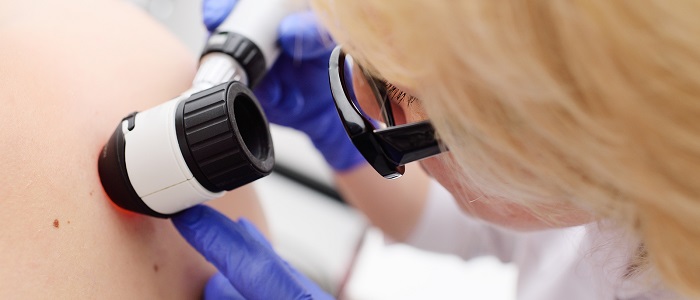
Artificial intelligence better at recognizing skin cancer than dermatologists
Researchers have shown for the first time that a form of artificial intelligence can detect skin cancer better than experienced dermatologists. The system, called deep learning convolutional neural network (CNN), was presented in the leading journal Annals of Oncology.
Artificial intelligence versus dermatologists
Researchers from Germany, the US and France trained the CNN to identify skin cancer by showing the system more than 100,000 images of malignant melanomas (the most deadly form of skin cancer). They also had the CNN assess benign birthmarks (‘naevi’).
Subsequently, dermatologists from all over the world were invited to participate in the research. 58 specialists from 17 countries accepted the request. They were subjected to a two-level test in which the same persons and cases were shown with an interval of four weeks between taking the pictures.
In level 1, dermatologists detected an average of 86.6 percent of melanomas. They also identified an average of 71.3 percent of cases that were not malignant. At level 2, dermatologists improved their performance, diagnosing 88.9 percent of malignant melanomas correctly and 75.7 percent of cases that were not cancerous. The CNN did considerably better and recognised no less than 95 percent of melanomas.
Machine learning
A CNN is an artificial neural network, inspired by the biological processes when nerve cells (neurons) in the brain are connected and react to what the eye sees. A CNN is able to quickly learn from images and thus improve its performance. This process is called machine learning.
Professor Holger Haenssle is lead author and works at the Department of Dermatology at the University of Heidelberg. He explains: “The CNN works like a child’s brain. With each training image, the ability to differentiate between benign and malignant improved”.
Most difficult cases of possible skin cancer
Haenssle continues: “After completing the training, we made two tests using data from the Heidelberg library. These had never been used for training and were therefore unknown to the CNN. On the basis of a set of 100 of the most difficult cases, the results of the dermatologists and the CNN were compared”.
“The CNN missed fewer melanomas, which means it had a higher sensitivity than the dermatologists. It was also less likely to have misdiagnosed benign birthmarks, which means it had a higher specificity. This can result in fewer unnecessary operations,” says Professor Haenssle.

